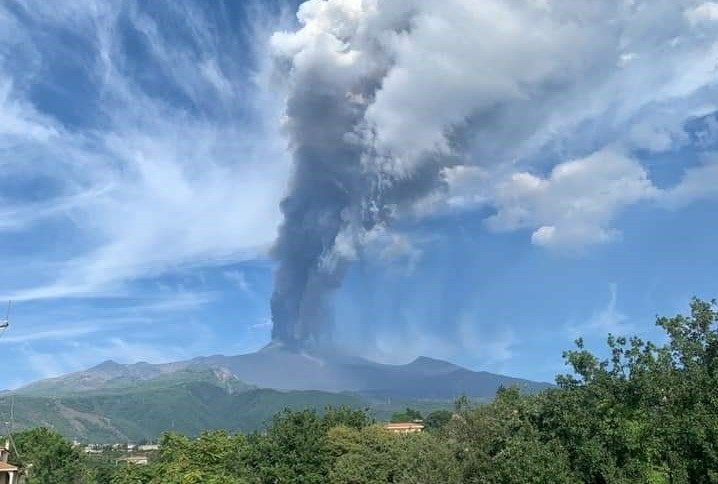
Italy’s Mount Etna, Europe’s most active volcano, erupted again on Tuesday, generating an ash plume that quickly rose to an altitude of almost 15,000 feet (4,500 meters).
There have been no reports of damage as of press time.
Etna joining the party 🇮🇹😬 pic.twitter.com/ZgBAlZayJg
— 🅱️L🇺E🇯A🇾🕊️ (@JayBirdReturns) September 21, 2021
The smog or vog (volcanic smog), a visible haze comprised of gas and an aerosol of tiny particles and acidic droplets created when sulfur dioxide (SO2) and other gases emitted from the volcano, has reached Greece.
Greek meteorologist Sakis Arnaoutoglou posted a photo recorded by the Sentinel5p/Copernicus satellite which shows that the volcanic smog has already crossed the Ionian Sea and has reached the Peloponnese.

Mount Etna, towering above the Mediterranean island of Sicily, has been experiencing a busy season this year. Scientists say that it has erupted more than 50 times in the first nine months of the year.
The amount of lava Etna has emitted since Feb.16 added 100 feet (30 meters) in height to the volcano’s southeast crater. One of Etna’s four summit craters, the southeastern peak now stands at a little over 11,000 feet (3,357 meters) high, having surpassed the 10,900-foot (3,324 m) northeastern crater, which had dominated the volcano for four decades.
Etna volcano (Italy), has already erupted too.
La Palma Volcano 🌋 🇪🇸
Etna Volcano 🌋 🇮🇹
Hope everyone is okay.
— BasedSpain (@BasedSpain1) September 21, 2021
Volcanic plumes can reach very high altitudes and can potentially impact air traffic. A similar plume emitted by Etna in early April was detected at the altitude of 23,000 feet (7,000 m). On ground level, sulfur dioxide can irritate the human respiratory system and trigger conditions such as asthma in susceptible individuals.
Scientists warn that Etna may create tsunami
Recently, as reported by Greek Reporter, scientists have warned that Mount Etna is slipping eastwards into the sea and could trigger a catastrophic tsunami.
Scientists are concerned the slow movements that have been measured on Mount Etna’s southeastern flank could escalate and result in part of it collapsing into the Mediterranean.
Such an event would put Sicily and the Ionian Sea at risk, as debris enters the water, possibly causing devastating waves.
However, researchers monitoring the site say all they can do for now is “keep an eye” on the active volcano as there is no way of telling whether this acceleration will come within years or centuries.
Etna volcano covered by lava flows that occurred 300,000 years ago
Mount Etna is thought to have begun its life as a submarine volcano that slowly grew above sea level as it erupted, time and again, gradually increasing its height with solidified lava, according to NASA’s Earth Observatory. It’s now largely covered with historic lava flows from eruptions that took place up to 300,000 years ago.
Etna covers an area of 1,190 km2 (459 sq miles) with a basal circumference of 140 km (87 miles). This makes it by far the largest of the three active volcanoes in Italy, being about two and a half times the height of the next largest, Mount Vesuvius. Only Mount Teide on Tenerife in the Canary Islands surpasses it in the whole of the European–North-African region west of the Black Sea.
In Greek mythology, the deadly monster Typhon was trapped under this mountain by Zeus, the god of the sky and thunder and the king of gods, and the forges of Hephaestus were said also to be underneath it.
One view is that the word Etna is from the Greek αἴθω (aithō), meaning “I burn”, through an iotacist pronunciation.
According to both Greek and Roman mythology, the god Vulcan (Greek: Hephaestus) had his blacksmithing forge located under mount Etna. Vulcan was the Roman god of blacksmithing. The volcano is also known as Muncibeḍḍu in Sicilian and Mongibello or Montebello in Italian (the Italian word literally means “beautiful mountain”).
See all the latest news from Greece and the world at Greekreporter.com. Contact our newsroom to report an update or send your story, photos and videos. Follow GR on Google News and subscribe here to our daily email!



